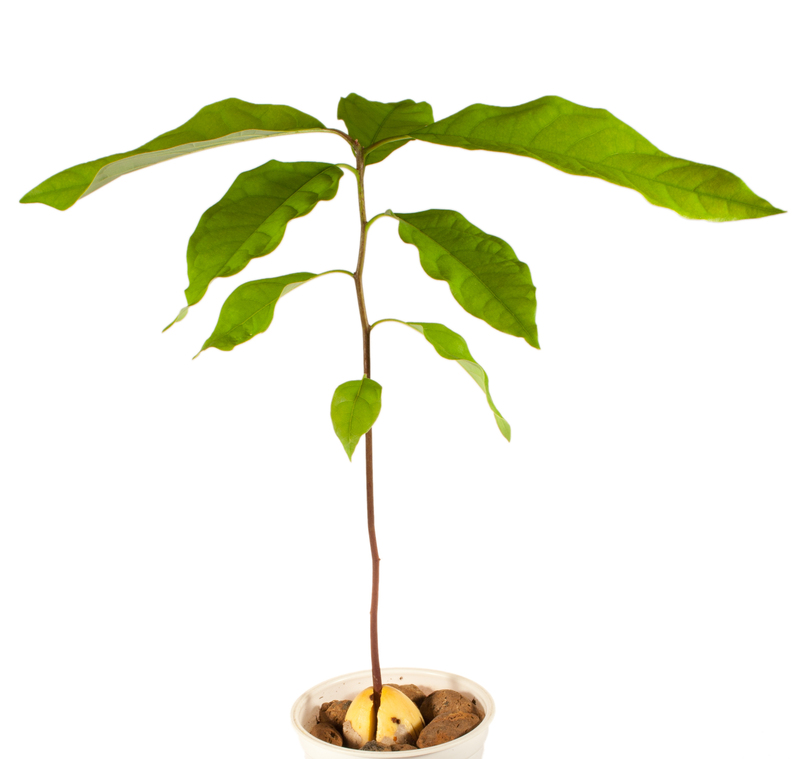Orchid Care: Thriving in Style
Posted on 17/05/2025
Orchid Care: Thriving in Style
Orchids are celebrated for their exquisite beauty and elegance, making them a favorite among houseplant enthusiasts and interior decorators alike. However, these stunning plants often have a reputation for being challenging to care for. Orchid care may seem intimidating, but with the right techniques and a stylish approach, anyone can help orchids truly thrive indoors. In this definitive guide, we'll uncover everything you need to know about orchid maintenance and cultivation so your home flourishes with vibrant, healthy blooms.
Understanding Orchids: Nature's Masterpiece
Before diving into the intricacies of growing orchids, it's essential to appreciate where these remarkable plants come from and what they need to prosper. Orchids belong to the family Orchidaceae, one of the largest plant families in the world, with over 25,000 species and more than 100,000 hybrids. Their natural habitats range from humid tropical rainforests to cooler mountainous regions, which largely dictates their unique care requirements.
Common Orchid Types for Home Growers
- Phalaenopsis (Moth Orchid): Famous for its long-lasting, delicate blooms. Perfect for beginners.
- Cattleya: Known as the "Queen of Orchids" due to their large, fragrant flowers.
- Dendrobium: Versatile, with diverse growth patterns and bloom shapes.
- Oncidium: Recognized for their spray of small, often fragrant, golden "dancing lady" blossoms.
- Vanda: Preferred for their vibrant colors--requires high humidity and bright light.
Each orchid type has a unique set of needs, but fortunately, most commercial orchids provide care tags indicating their primary requirements. Getting to know your species is the first step in chic orchid care.

The Foundations of Elegant Orchid Care
1. Regulation of Light
Proper lighting is crucial for orchid vitality. Too little light and your orchids won't bloom; too much can scorch leaves. But how do you judge what's just right?
- Indirect sunlight is ideal. Place orchids near east or west-facing windows where soft morning or afternoon light prevails.
- Leaf color is a reliable indicator: Bright green means healthy; dark green signals insufficient light; yellowish or red-tinted leaves may mean too much light.
- Supplement natural light with grow lights if necessary, especially during fall or winter.
Elegant homes often use sheer curtains or lightly tinted glass to beautify spaces while providing orchids with filtered sunshine.
2. Mastering the Art of Watering
Without a doubt, overwatering is the number one cause of orchid distress. Here's how to foster hydration without drowning your plant:
- Water only when the potting medium is nearly dry. Check with your finger or a wooden stick.
- Never leave orchids sitting in water--good drainage is non-negotiable.
- Use tepid, dechlorinated water for best results; rainwater is ideal if accessible.
Tip: Water less frequently in winter and more during periods of active growth and blooming. Most orchids require only weekly watering, but always check your specific variety's needs!
3. Humidity and Airflow: Embracing the Tropical Vibe
Many orchids developed in humid habitats. Recreating that lush environment indoors is essential for thriving orchids:
- Maintain ambient humidity between 40-70%. Use humidifiers, misting, or humidity trays filled with pebbles and water.
- Promote gentle airflow with a fan to prevent disease and mimic natural breezes.
- Avoid crowding; great style means giving each orchid room to breathe and display its grace.
4. Potting and Repotting: Style Meets Substance
Unlike most houseplants, orchids thrive in well-ventilated pots with specialized mixes. Here's how to combine flair with plant health:
- Use transparent or decorative orchid pots with plenty of drainage holes to showcase roots and facilitate healthy air circulation.
- Orchid potting mediums include bark, sphagnum moss, or a mix. Avoid typical potting soil, which retains too much moisture.
- Repot every 1-2 years or when the medium breaks down to prevent root rot while maintaining a stylish presentation.
Choosing chic planters or decorative cache pots adds a fashionable touch to your thriving orchid display.
Nutrition: Feeding Your Orchids for Stylish Blooms
Choosing the Right Fertilizer
Orchids require nutrients for lush foliage and striking flowers, but are sensitive to over-fertilization.
- Use a balanced, water-soluble orchid fertilizer (20-20-20), available at most garden centers.
- Feed "weakly, weekly": Dilute fertilizer to one quarter or half strength.
- Reduce feeding during dormant periods (typically autumn and winter).
Avoid direct contact with leaves and flowers--always apply fertilizer to moist roots, not dry ones, to prevent burns.
Signs of Nutritional Imbalances
- Yellowing leaves may signal lack of nitrogen.
- Poor or stunted blooms can indicate phosphorus deficiency.
- Browning leaf tips sometimes result from excess minerals or salts--flush the pot with clear water monthly to remove buildup.
Pruning, Grooming, and Orchid Aesthetics
Pruning for Vigorous Growth
Caring for your orchid's appearance is as much about plant health as it is about style:
- Remove spent blooms and yellow leaves with sterilized scissors to prevent disease and direct energy to new growth.
- After flowering, some varieties like Phalaenopsis can be pruned just above a node on the spike to encourage reblooming.
Grooming your orchid regularly keeps it looking elegant and enhances its decorative appeal, perfectly blending function with beauty.
Supporting Flower Spikes in Style
- Use chic, decorative stakes and clips to support heavy flower spikes.
- Arrange orchid pots in groups for a bold, designer statement.
Remember: A beautifully arranged orchid display can transform any room into a haven of sophistication.
Troubleshooting Common Orchid Issues
Orchid Pests
- Common invaders include scale, mealybugs, and spider mites.
- Remove pests with a cotton swab dipped in isopropyl alcohol, or use insecticidal soap as needed.
- Isolate infected plants immediately to prevent spread.
Diseases and Root Rot
- Black, mushy roots indicate rot, usually from overwatering.
- Trim affected roots and repot in fresh medium if necessary.
- Fungal spots on leaves can be managed by improving air circulation and using fungicide sprays.
Failure to Bloom
If your orchid isn't flowering, consider these troubleshooting tips:
- Check and adjust light levels--insufficient sunlight is a common culprit.
- Ensure a brief period of cooler nighttime temperatures in fall for certain species, such as Phalaenopsis, to trigger blooming.
- Review your feeding regimen and ensure it matches the plant's growth cycle.
Designer Tips for Stylish Orchid Displays
- Choose statement containers: Sleek ceramics, glass cachepots, or minimalist wood planters.
- Play with height and spacing to create visual interest--arrange various orchid types at multiple levels.
- Incorporate moss, decorative stones, or driftwood for a modern, tropical effect.
- Use grouped orchid arrangements as living centerpieces for dining tables, foyers, or reception areas.
- Coordinate flower colors with your home's palette for a cohesive look.
With thoughtful choices, your thriving orchids become living works of art--an ideal blend of nature and style.

Frequently Asked Questions About Orchid Care
How often should I water my orchid?
Most orchids prefer to dry out between waterings. As a general rule, water every 7-10 days, but always check your plant and potting medium before watering.
When do orchids need repotting?
Repot orchids every 1-2 years, or when the potting medium breaks down. Spring, after flowering, is usually ideal.
Can orchids grow in low light?
Some types, like Phalaenopsis, tolerate lower light better than others, but all orchids need bright, indirect light for the best blooms.
Why are my orchid's leaves turning yellow?
Yellowing can signal aging leaves, improper watering, or nutritional imbalances. Evaluate watering habits, light, and fertilizer.
Your Journey to Orchid Success--In Style!
With their intricate flowers and graceful structure, orchids epitomize sophistication in any home. But proper orchid care is the secret to keeping these captivating plants both healthy and beautiful. From watering and lighting to pruning and stylish display, each element of care combines science and artistry for a dazzling, living statement. Whether you're embarking on your first orchid adventure or refining your expert touch, these tips will help your orchids not just survive, but thrive in style--bringing joy, elegance, and inspiration to your everyday life.
Ready to showcase your orchid mastery? Share your thriving collections and stunning displays with us, and let the beauty of your orchids inspire others to cultivate their own paradise-- in style!



